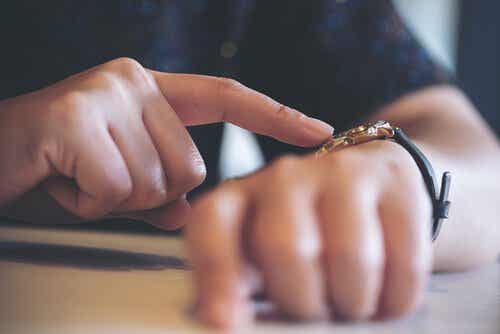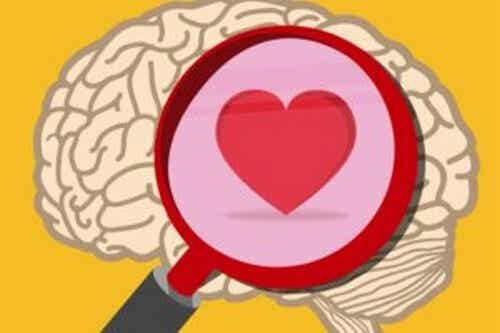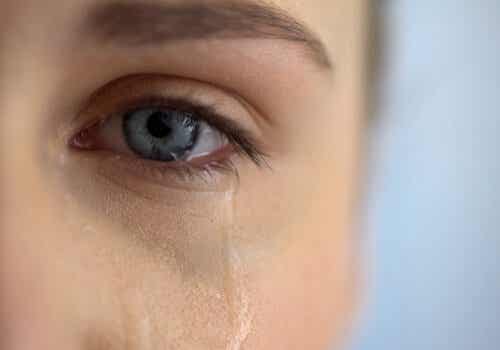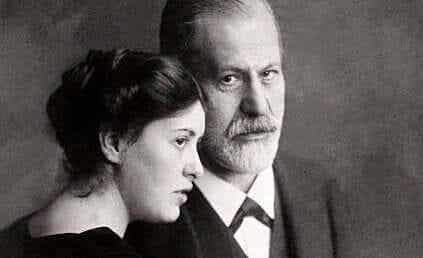People with cherophobia are afraid of being happy and this prevents them from looking for experiences that could make them happy.

Last update: January 28, 2021
As paradoxical as it may seem, the fear of happiness is real and is known as cherophobia. It is an irrational fear that is closely related to anxiety and that prevents us from getting involved in activities that could make us happy.
If we thought for a moment, we would realize that we have witnessed this phenomenon on several occasions, both in others and in ourselves.
The term seems to derive from the Greek χαρά, meaning cheerfulness, happiness, joy, and φοβία, meaning fear, fright. However, it is difficult to trace the origins of the term since the Diagnostic and Statistical Manual of Mental Disorders (DSM) does not contain any definition.
Who is afraid of being happy?
People suffering from cherophobia tend to reject situations in which cheerfulness is a predominant feeling. This does not mean that they want to be unhappy or sad; rather they reject happiness because this state is followed by that of sadness, and being sad is not what they want.
Whether it is because happiness is not a permanent state or because being happy can make others feel miserable, the cherophobic person refuses to attend social events where it could make them happy, or any other situation that in some way can awaken a feeling of well-being in her.
Furthermore, a distance yourself from any positive changes in your life. Basically, she keeps away from any possibility that can lead her to feel good, to feel cheerful and feel a state of well-being. Here's why some of her most common thoughts are:
- "If I'm happy, something bad is sure to happen."
- “Being happy hurts both me and others”.
- “Trying to be happy makes me waste time and energy”.
Beyond that, these people get defensive and don't let themselves be persuaded by interactions with other individuals. They are usually insecure, as they don't have full control of their emotions. This buildup of negative emotions can result in rejection of what is fun, therefore towards happiness.
Examples of events in which those suffering from cherophobia do not participate
If you know someone with cherophobia, understand that inviting them to attend social events can be a cause for discussion or annoyance.
A clear example is given by birthdays. In these events the focus is on another person, but it is expected from the participants positive emotions or fun, things that the person with cherophobia is unwilling to demonstrate. Likewise, a family lunch will be stressful.
Business dinners, lunches with friends or other social gatherings are situations that are rejected. Basically all those events that revolve around the meeting of several people.
Following this, we would be tempted not to invite the person or not to attend an event that they will also be in to avoid feeling uncomfortable, worried and embarrassed. Yet, the solution is quite another.
How to overcome cherophobia
Since it is not a clinically recognized disorder, there is no specific treatment. Nevertheless, the advice is to contact a psychologist, so that he can indicate the most suitable exercises to overcome the problem.
First of all, it is important to accept the existence of the phobia. This is often the most complicated step in the therapeutic process, so it is normal that the patient may need external help.
1. Avoid isolation
Relatives and friends need to be especially careful if a loved one begins to isolate themselves in a worrying way. This could be the first wake-up call.
It's important integrate a gradual adaptation to social life in the sessions of the psychologist, encouraging the person who suffers from reconnecting with friends and social events that he initially avoided.
This does not mean wanting to change his personality: the patient's social preferences must be taken into account in order to outline the most suitable therapeutic path.
The person must be accompanied throughout the journey. Being an active part of the healing process will help her become aware of the situation and obtain greater benefits.
2- Be patient
Major changes such as overcoming cherophobia do not happen overnight. Both the patient and their loved ones need to be patient and accept that it is a slow process. For this it is better not to have excessive expectations; this will avoid feeling deeply frustrated.
3. Seek help
In some cases, someone with a psychological disorder is the only person in their circle who is not aware that they need help to heal.
This may be due to either the denial of the problem and embarrassment that comes from externalization. He is unable to take the plunge and seek help from a specialist.
After all, only the professional is able to manage the situation and give the patient the tools to overcome his problem step by step. If we are in the role of patients, it is important to listen to those who advise us to contact a professional.
If, on the other hand, we are part of the intimate circle of the person with cherophobia, we must assume the role of protective agents. As already mentioned, patience is essential, but so is action: we cannot just observe the problem as outsiders, because doing so would only aggravate the situation.
Conclusions on cherophobia
We must not ignore the choice of a loved one to repeatedly refrain from social events and relationships. Like all psychological disorders, too cherophobia requires rapid and professional intervention. However, the role of friends and family should not be forgotten, as they are equally fundamental for healing.


























